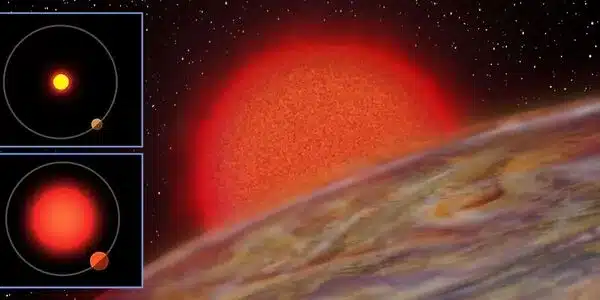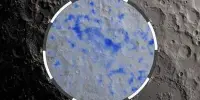Astronomers have made the uncommon finding of a small, chilly exoplanet and its huge outer neighbor, which sheds light on how planets like Earth formed. The discovery includes a planet with a radius and mass between Earth and Neptune, as well as a potential 146-day orbit around its host star. The star system also has an outer, massive companion, 100 times the mass of Jupiter.
This is a remarkable discovery, as exoplanets smaller and lighter than Neptune and Uranus are notoriously difficult to detect, with only a few detected to date. Such unusual systems are especially fascinating for better understanding planetary creation and evolution; they are regarded to be a necessary step in the finding of Earth-like planets surrounding stars.
A new planetary system has been identified near the star HD88986. This star has a similar temperature to the Sun, but a little bigger radius, and is visible to experienced observers at dark sky sites around the UK, including Bannau Brycheiniog National Park (Brecon Beacons).
The study, published in the journal Astronomy & Astrophysics, is conducted by Neda Heidari, an Iranian postdoctoral scholar at the Institut d’astrophysique de Paris (IAP). In the United Kingdom, Thomas Wilson, a senior research fellow at the University of Warwick, co-led the satellite data processing, which included the hunt for new planets. The team also comprises researchers from 29 other institutes across nine countries, including Switzerland, Chile, and the United States.
The majority of the planets we’ve discovered and analyzed for their mass and radius have brief orbits, often fewer than 40 days. In comparison to our solar system, Mercury, the nearest planet to the Sun, takes 88 days to complete its orbit.
Neda Heidari
A cold, Neptune-like exoplanet
The planetary system includes a cold planet smaller than Neptune, a so-called sub-Neptune, HD88986b. This planet has the longest orbital period (146 days) among known exoplanets smaller than Neptune or Uranus with precise mass measurements.
According to IAP’s Neda Heidari, “The majority of the planets we’ve discovered and analyzed for their mass and radius have brief orbits, often fewer than 40 days. In comparison to our solar system, Mercury, the nearest planet to the Sun, takes 88 days to complete its orbit. The inability to identify planets with longer orbits complicates our knowledge of how planets form and evolve in other systems, including our own. HD88986b, with its orbital period of 146 days, may have the longest known orbit among minor planets with reliable data.
HD88986b was detected using the SOPHIE – a high-precision spectrograph (a machine that analyses wavelengths of light from exoplanets) at the Haute-Provence Observatory, France. SOPHIE detects and characterizes exoplanets using the ‘radial-velocity method’; measuring tiny motion variations of the star induced by planets orbiting it. These observations revealed the planet and allowed the team to estimate its mass to be approximately 17 times that of the Earth.

Complementary observations obtained with NASA’s space telescope Transiting Exoplanet Survey Satellite (TESS) and the European Space Agency’s (ESA) space telescope CHaracterising ExOPlanet Satellite (CHEOPS) indicate that the planet probably “transits” in front of it host star. This occurs when its orbit passes on the line of sight between the Earth and the star, partially occulting the star — causing a decrease in its brightness that can be observed and quantified.
These observations by both satellites allowed the team to directly estimate the diameter of the planet as about twice that of the Earth. The findings of the study rely on more than 25 years of observations, also including data from ESA’s Gaia satellite and the Keck Telescope in Hawaii.
Furthermore, with an atmosphere temperature of only 190 degrees Celsius, HD88986b offers a unique opportunity to research the composition of so-called “cold” atmospheres, while the majority of planetary atmospheres identified are above 1,000 degrees Celsius.
Because of the broad orbit of the sub-Neptune HD88986b (up to 60% of the Earth-Sun distance), HD88986b most likely experienced uncommon encounters with other planets in the planetary system, as well as mild mass loss due to the central star’s high UV radiation. It may thus have kept its initial chemical composition, allowing scientists to investigate alternative theories for the genesis and evolution of this planetary system.
According to Thomas Wilson from the University of Warwick’s Department of Physics, HD88986b is effectively a scaled-down Neptune orbiting between Mercury and Venus. It becomes one of the most well-studied tiny, frigid exoplanets, paving the possibility for more research into its atmosphere to better comprehend its similarities to Earth. It also orbits a star with a temperature similar to the Sun, making it a predecessor to the Earth-like planets discovered by the PLATO space telescope, in which Warwick plays a key role.”
A second, outer companion
Astronomers have discovered a second, outer partner surrounding the core star. This exoplanet is extremely huge (more than 100 times Jupiter’s mass), with an orbital period of several tens of years. Further observations are required to further understand its nature and features.
Thomas Wilson stated, “We collected data from telescopes pointing at HD88986 for almost 25 years, making this one among the most extensively studied planetary systems. This plethora of data showed a second outer partner more massive than Jupiter, which may have played a crucial role in the development of the Neptune-like planet in the same way Jupiter did in our own Solar System.”















